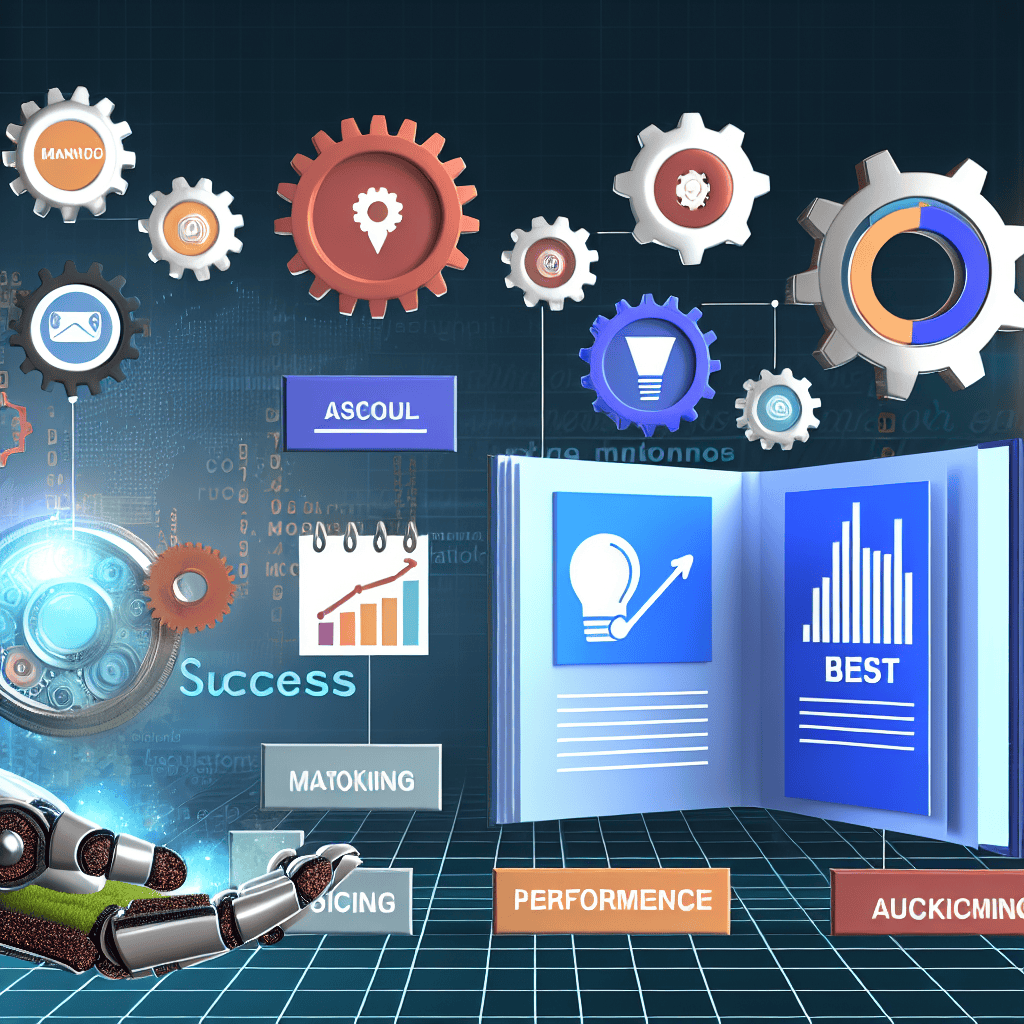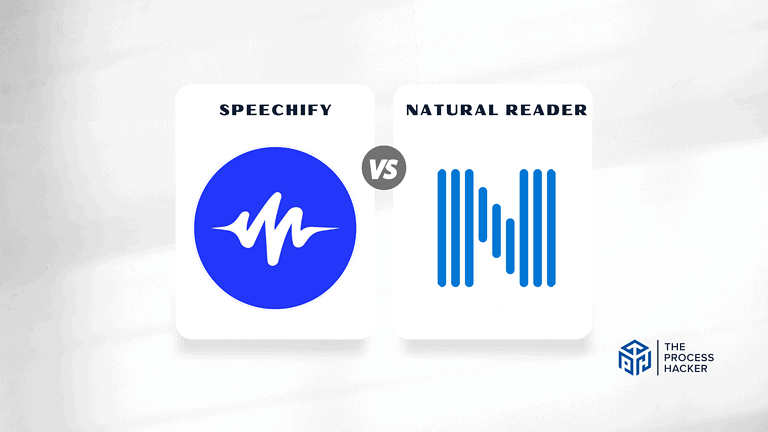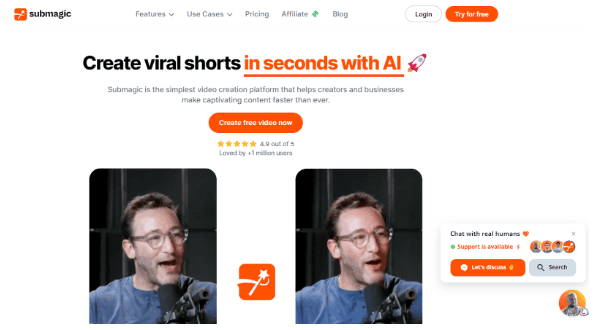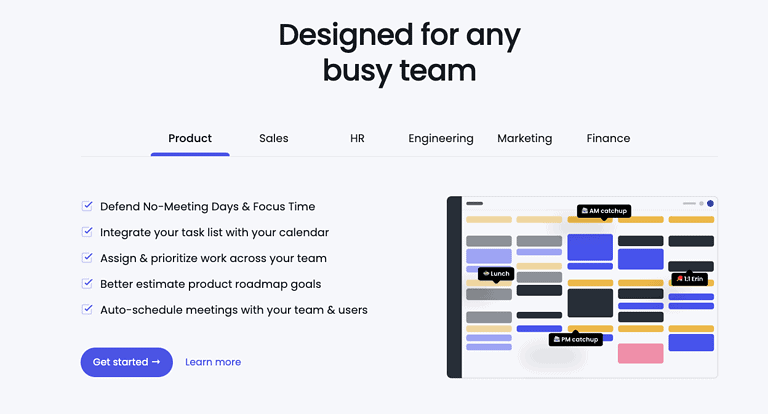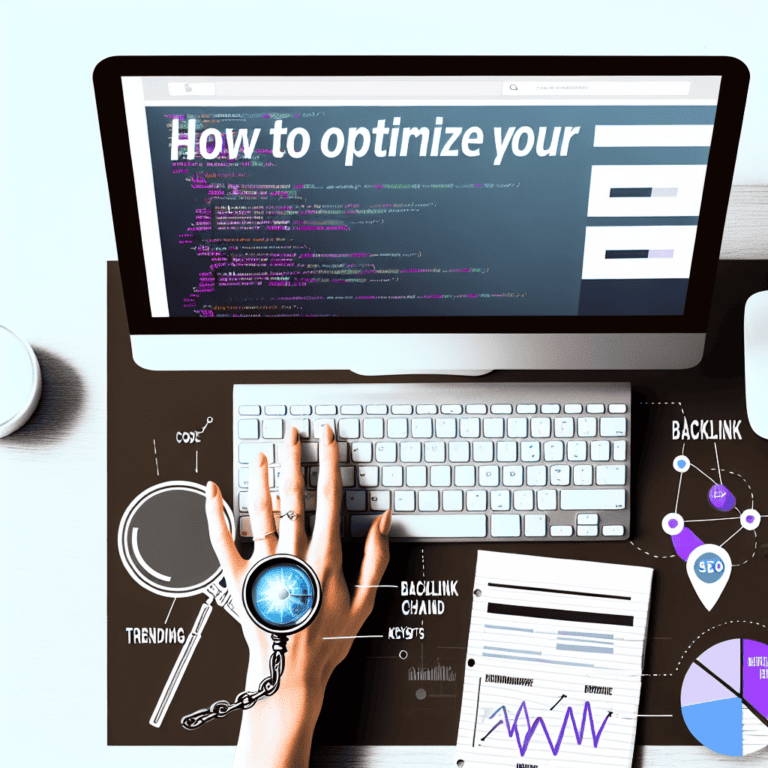11 Game-Changing Marketing Automation Best Practices
Let’s be honest – in today’s fast-paced digital landscape, juggling lead nurturing, email campaigns, social media engagement, and data analysis can feel like an endless uphill battle. If you’re nodding along, it’s time to harness the power of marketing automation.
Imagine streamlining your workflows, personalizing customer interactions at scale, and watching your ROI soar. Sounds enticing, doesn’t it?
In this blog post, we’ll unveil 11 game-changing marketing automation best practices that will transform your approach to marketing strategy. Get ready to unlock a new level of efficiency and effectiveness that will propel your business to unprecedented heights.
What is Marketing Automation?
Marketing automation refers to software and technologies designed to market more effectively on multiple online channels (such as email, social media, websites, etc.) and automate repetitive tasks. This strategy is crucial in identifying and solving customer pain points through various digital landscapes, ensuring marketing campaigns are more efficient and data-driven.
Key Components of Marketing Automation Systems
The architecture of marketing automation is built on several foundational components that enable seamless campaign execution:
- Lead Nurturing and Scoring: Involve tracking and nurturing prospects with personalized content to advance them along the buyer’s journey. Lead scoring prioritizes these leads based on their engagement level and likelihood to convert.
- Email Marketing Automation: At its core, this component automates the scheduling and sending of emails to segments of your audience, ensuring that they receive timely, relevant content. Use tools like ConvertKit or ActiveCampaign to create personalized email sequences and track engagement.
- Social Media Automation: This feature allows for the scheduling and analyzing social media posts across various platforms, enabling consistent presence without requiring constant manual input. You can load posts to Hootsuite or Buffer and set a predetermined schedule for their publication.
- Analytics and Reporting: Central to making informed decisions, this feature captures and analyzes data from your automation efforts, providing actionable insights to refine strategies continually.
Benefits of Implementing Marketing Automation
Here’s why you should consider integrating marketing automation into your digital strategy:
- Increased Operational Efficiency: By automating routine tasks, your team can focus on more strategic activities that require a human touch.
- Enhanced Customer Experience: Marketing automation software helps deliver personalized customer experiences at scale, making your messages more relevant and timely.
- Improved Conversion Rates: With advanced targeting and personalization, you can more effectively move leads through the sales funnel, increasing the likelihood of conversion.
- Better ROI Measurement: Marketing automation provides robust tools to track the effectiveness of your campaigns, allowing you to allocate resources more effectively and maximize your marketing spend.
By harnessing these best practices, you can ensure your marketing efforts are more strategic, targeted, and effective.
Why You Should Master Marketing Automation
Now, you might be wondering, “Is marketing automation worth the investment?” The answer is a resounding YES! Here are the reasons why:
1) Increased Efficiency and Productivity
You free up valuable time by automating routine tasks such as email campaigns, social media posting, and data collection. This means you can concentrate on crafting more intricate strategies and engaging content that resonates with your target audience rather than getting bogged down by the day-to-day execution of campaigns.
2) Improved Lead Generation and Nurturing
Marketing automation provides sophisticated tools to help you identify potential customers and nurture them through personalized interactions. By tracking user interactions and behaviors, you can tailor communications to meet each lead’s specific needs and interests, greatly increasing the chances of conversion.
3) Enhanced Customer Experience and Engagement
Personalization is key in today’s marketing landscape. Automation tools enable you to deliver customized messages and content relevant to individual preferences and behaviors. This enhances the customer experience and fosters greater engagement by making interactions feel more thoughtful and tailored.
4) Better ROI and Revenue Growth
With improved targeting and efficiency, marketing automation directly contributes to better returns on investment. You can more accurately measure the impact of your campaigns and adjust strategies in real time to optimize performance. This leads to more effective budget allocation and, ultimately, accelerated revenue growth.
11 Marketing Automation Best Practices
Staying ahead means embracing the power of marketing automation. It’s not just about streamlining tasks; it’s about creating personalized experiences that drive results.
Let’s dive into the 11 best marketing automation practices that will transform your marketing game this year:
1. Know Your Target Audience Inside Out
First things first, you have to understand who your audience is. You need to create detailed buyer personas to tailor your approach effectively. This isn’t just about knowing their age or job title; dive deep into their behaviors, preferences, and pain points.
Utilize customer data to segment your audience more accurately, ensuring your messages hit the right note every time. Implement behavioral tracking to gain insights into how customers interact with your platform, which helps refine your strategies and ensure they resonate with your audience.
2. Keep It Simple, Smarty (KISS)
Starting simple can lead to significant gains. Begin your journey with basic automation workflows that handle repetitive tasks, freeing you to focus on more complex strategies. As you become comfortable, gradually introduce more sophisticated processes.
Always prioritize workflows that have a high impact on your efficiency and customer satisfaction. This approach ensures you are not overwhelmed by complexity while maximizing the benefits of automation.
3. Align Marketing Automation with Your Customer’s Journey
Start by mapping out the buyer’s journey. This visual representation lets you see exactly where your customers are and what they need at each stage.
Next, create targeted content that speaks directly to the needs and interests of potential customers at each stage of their journey. For example, early-stage content might focus on education and awareness, while later-stage content can dive into product comparisons and user testimonials.
Finally, set up trigger-based automations. These are actions initiated by a customer’s behavior that ensure they receive relevant information at the perfect moment. Whether it’s a follow-up email after a webinar sign-up or a special offer when someone abandons a cart, these automations keep your engagement timely and relevant, increasing the likelihood of a sale.
4. Personalize, Personalize, Personalize!
Personalization is more than a buzzword—it’s what sets successful campaigns apart. Start by using dynamic content that adapts based on the information you hold about your customers. This could be as simple as inserting a name in an email or as complex as customizing the entire content of a newsletter based on past behaviors.
To really elevate your game, implement AI-driven personalization. This technology can analyze customer data at scale to predict future behavior and craft messages that resonate on a personal level. For instance, if you notice a trend that certain customers prefer video content, your next email to them could feature more video elements automatically.
Lastly, leverage the wealth of customer data at your disposal to create truly tailored experiences. Each interaction you have with your customers provides insights into their preferences and needs.
Use this data to customize your touchpoints, ensuring that every interaction feels personal and relevant. This not only improves engagement but also enhances customer satisfaction and loyalty.
5. Integrate Your Marketing Automation Tools
Integration is crucial for a seamless marketing operation. Start by connecting your marketing automation solution with your CRM system like Attio or Pipedrive. This linkage ensures that all customer interactions and data are centralized, providing a complete view of customer activities and enabling more coordinated, effective marketing strategies.
Next, sync your marketing automation system with social media platforms like Buffer or Hootsuite. This allows you to automate social postings based on customer interactions and behaviors, ensuring you engage with your audience where they spend their time. It also helps you track the effectiveness of social media campaigns directly within your marketing automation platform, making adjustments in real-time based on performance.
Finally, don’t forget to integrate with analytics tools. These tools help you measure the success of your campaigns, understand customer behavior, and optimize your efforts based on data-driven insights. With proper integration, you can automate reports and gain real-time visibility into what’s working and what isn’t, allowing you to pivot your marketing automation strategy as needed swiftly.
6. Implement Lead Scoring and Routing
Lead management through scoring and routing is pivotal for optimizing your sales process and enhancing efficiency. Begin by developing a lead scoring model that assigns points to leads based on their interactions with your marketing content, demographic information, and website behavior. This model helps prioritize leads, ensuring that your sales team focuses its efforts on prospective customer segments for conversion.
Next, automated lead routing should be set up to ensure leads are quickly and efficiently directed to the appropriate sales personnel. This automation speeds up the response time and increases the chances of conversion by matching leads with the team member best equipped to meet their needs.
Continuously refine your scoring criteria based on feedback and results. As you gather more data and insights into what behaviors and characteristics translate into sales, adjust your scoring model to reflect these findings. This ongoing refinement process ensures that your lead scoring remains relevant and effective, helping your team to adapt to changes in customer behavior and market conditions.
7. Create Engaging, Multi-Channel Campaigns
In today’s connected world, engaging your customers through multiple channels is more than just a best practice—it’s a necessity. Start by developing omnichannel marketing strategies that provide a cohesive user experience across all platforms, whether it’s email, SMS, social media, or your website. This approach ensures that you meet your customers where they are, increasing the likelihood of interaction and engagement.
Use a mix of email, SMS, and social media to communicate with your audience. Each channel has its strengths—emails can carry more detailed messages, SMS is great for urgent updates, and social media allows for dynamic, interactive content. Combining these channels in your campaigns ensures that your message is reinforced and more likely to be seen by your audience.
Ensure consistent messaging across all channels. Consistency helps build brand recognition and trust, making it easier for customers to understand and connect with your message. Even as you tailor the style or format for different platforms, the core message should remain the same, providing a seamless experience for everyone, regardless of how they interact with your brand.
8. Optimize Your Landing Pages and Forms
Optimizing your landing pages and forms is essential for converting visitors into leads and customers. Start by designing mobile-responsive landing pages.
With the majority of web traffic now coming from mobile devices, your pages must look good and function well on smartphones and tablets. A responsive design ensures that your content is accessible and engaging regardless of device, enhancing user experience and boosting conversion rates.
Implement progressive profiling in your forms. This technique involves gradually collecting information about your leads through shorter forms spread over multiple interactions rather than asking for all details upfront. This less invasive approach not only improves user experience but also increases the likelihood of form completion, giving you richer customer profiles over time.
Regularly A/B test your landing pages to determine what works best for your audience. Experiment with different elements like headlines, call-to-actions, images, and form structures to see which combinations drive the most conversions. This ongoing testing allows you to refine and improve your pages continually, ensuring they remain effective and relevant to your audience’s needs.
9. Leverage AI and Machine Learning
Incorporating AI and machine learning into your marketing automation can transform how you interact with and respond to your audience. Start by implementing predictive analytics.
This technology uses historical data to predict future behaviors, helping you to anticipate customer needs, personalize communications, and optimize your marketing efforts based on predicted outcomes. Predictive analytics can help you target the right audience with the right message at the right time, enhancing the effectiveness of your campaigns.
Utilize AI-powered chatbots on your website and social media channels. These chatbots can respond instantly to customer inquiries, offering a seamless interactive experience. They can handle various marketing tasks, from answering frequently asked questions to guiding users through a complex purchase process, improving customer service, and freeing up your human resources for more complex interactions.
Finally, automate content creation and curation. AI tools can help generate content ideas, draft content, and even suggest improvements based on SEO best practices and engagement metrics. This automation can significantly speed up your content creation process while maintaining high quality and relevance, allowing you to consistently engage your audience with fresh, optimized content.
10. Monitor and Measure Key Metrics
Effective marketing automation relies on continuously monitoring and measuring key performance indicators. Start by tracking engagement and conversion rates.
These metrics are vital for understanding how well your content and campaigns resonate with your audience and how effectively they drive desired actions, such as sign-ups, downloads, or purchases. Regularly reviewing these rates helps you pinpoint what captures attention and converts browsers into buyers.
Next, delve into analyzing customer lifecycle metrics. This involves studying your audience’s behavior from initial contact through to post-purchase activities. By understanding these metrics, you can identify critical touchpoints and areas for improvement throughout the customer journey, enhancing overall satisfaction and boosting retention rates.
Finally, incorporate attribution modeling to measure your marketing efforts’ return on investment (ROI). Attribution modeling allows you to attribute conversions back to specific marketing initiatives, providing a clear picture of which strategies and channels are most effective at driving revenue. This insight is crucial for allocating your marketing budget more efficiently, ensuring that you invest in the most impactful activities.
11. Continuously Test and Optimize
The digital marketing landscape is ever-evolving, making continuous testing and optimization essential for maintaining and improving your marketing effectiveness. Begin by conducting regular A/B tests across your campaigns and digital assets.
This involves testing two versions of a webpage, email, or ad to see which performs better in terms of engagement and conversion rates. Such testing provides empirical data that can be used to make informed decisions about what resonates best with your audience.
Next, analyze the results of these tests and implement the necessary improvements. This step is crucial as it translates insights into action, enhancing your marketing strategies over time. Regular analysis not only helps in refining individual elements but also informs broader strategic adjustments.
Lastly, stay updated with industry trends and best practices. The world of marketing automation is dynamic, with new tools, strategies, and updates emerging regularly. Keeping abreast of these changes enables you to adapt and integrate new methodologies to further optimize your marketing efforts, ensuring you remain competitive and relevant in your industry.
Key Considerations for Successfully Implementing Marketing Automation
At the heart of every successful marketing automation strategy lies clean, quality data. Ensuring your data is accurate, up-to-date, and thoroughly vetted eliminates the risk of misdirected campaigns and ensures that your automation efforts reach the right people with the right message. Regular data audits and cleanses are crucial to maintaining the integrity of your marketing initiatives.
Effective marketing automation transcends the marketing department; it requires input and collaboration across multiple departments, including sales, customer service, and IT. This integration ensures that all touchpoints in the customer journey are aligned and that the insights gained from data analytics are utilized effectively across the organization.
While automation can streamline processes and increase efficiency, the human touch remains irreplaceable in crafting a personalized customer experience. Balancing automated processes with human interactions—like personal follow-ups or customer service calls—can enhance the personal connection with your audience and boost customer loyalty.
Taking it to the Next Level: Advanced Marketing Automation Strategies
Ready to push the boundaries of marketing automation? Here are a few advanced strategies to elevate your campaigns and achieve even greater results:
1) Implementing account-based marketing (ABM)
Account-based marketing focuses your efforts on high-value accounts, tailoring personalized campaigns to specific decision-makers within those organizations. This targeted approach can dramatically increase conversion rates and ROI.
2) Utilizing predictive lead scoring
Predictive lead scoring leverages AI and machine learning to identify your most promising leads. This lets you prioritize your efforts and focus on those most likely to convert, saving you time and resources.
3) Incorporating augmented reality (AR) in campaigns
Augmented reality offers immersive experiences that captivate and engage your audience. Consider incorporating AR into your campaigns to showcase products, provide interactive demos, or create unique brand experiences that leave a lasting impression.
Alternatives to Traditional Marketing Automation
While traditional marketing automation tools have their merits, the ever-evolving marketing landscape offers exciting alternatives that cater to diverse needs and strategies. Let’s explore a few of them:
1) Growth marketing platforms
Growth marketing platforms take a holistic approach, combining marketing automation, analytics, and experimentation capabilities under one roof. These platforms empower you to optimize your entire marketing funnel, from acquisition to retention, driving sustainable growth.
2) Customer data platforms (CDPs)
CDPs centralize and unify customer data from various sources, providing a 360-degree view of your audience. This enables you to create highly personalized campaigns based on individual behaviors, preferences, and interactions, fostering stronger relationships and driving conversions.
3) Hybrid automation-human approaches
Recognize the power of both automation and human touch. A hybrid approach blends automated workflows with personalized human interactions, ensuring efficiency and scalability without sacrificing the warmth and authenticity of human connection.
Final Thoughts on Marketing Automation
Embracing automation remains a pivotal strategy for businesses aiming to thrive in a competitive environment.
The key to success lies not only in adopting the latest tools but also in integrating them thoughtfully with human insights and cross-departmental collaboration. Whether through traditional platforms or emerging technologies like CDPs and growth marketing platforms, the goal is to enhance customer engagement and optimize conversion rates effectively.
By continuously testing, adapting, and personalizing, companies can harness the full potential of marketing automation to drive growth and forge stronger connections with their

